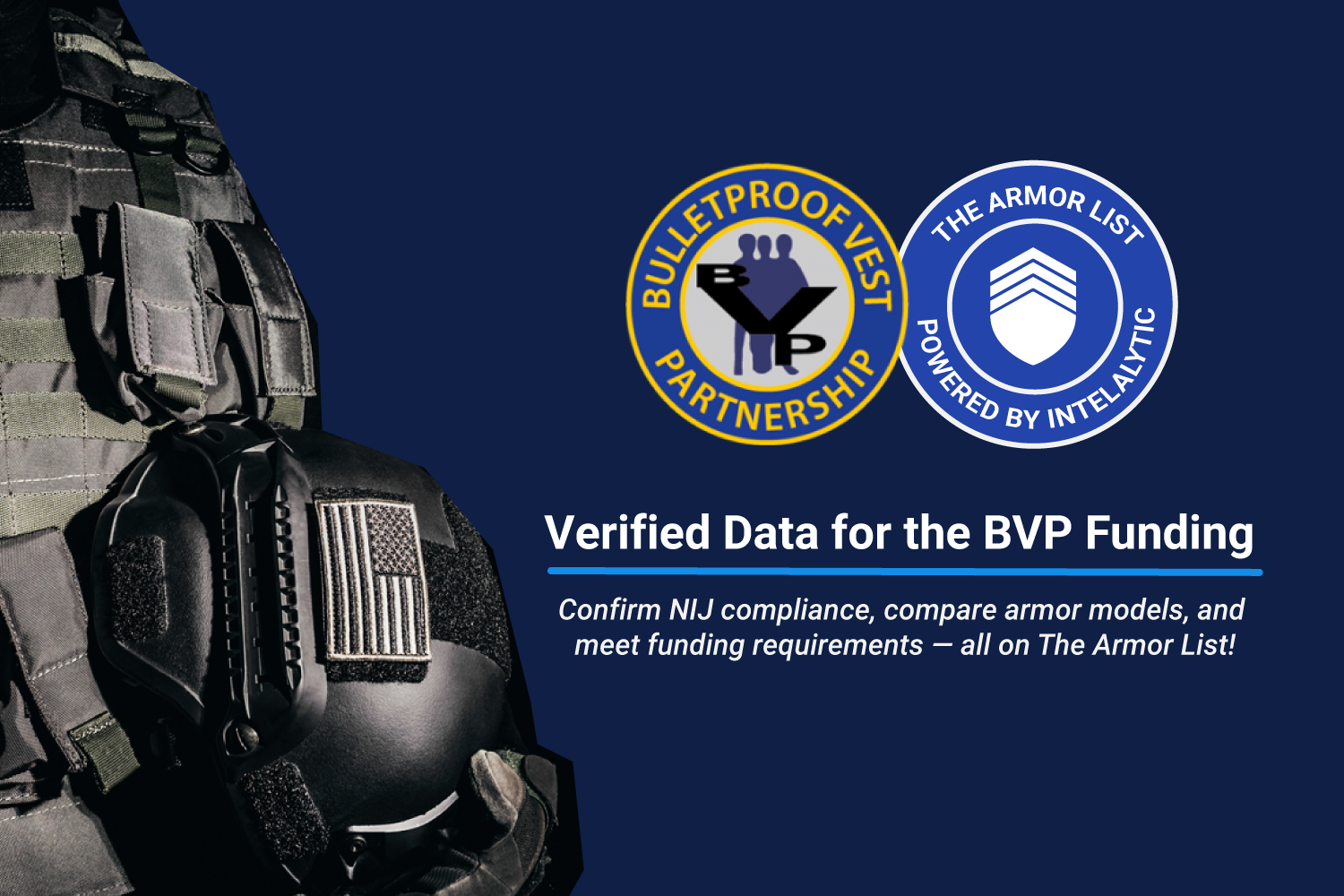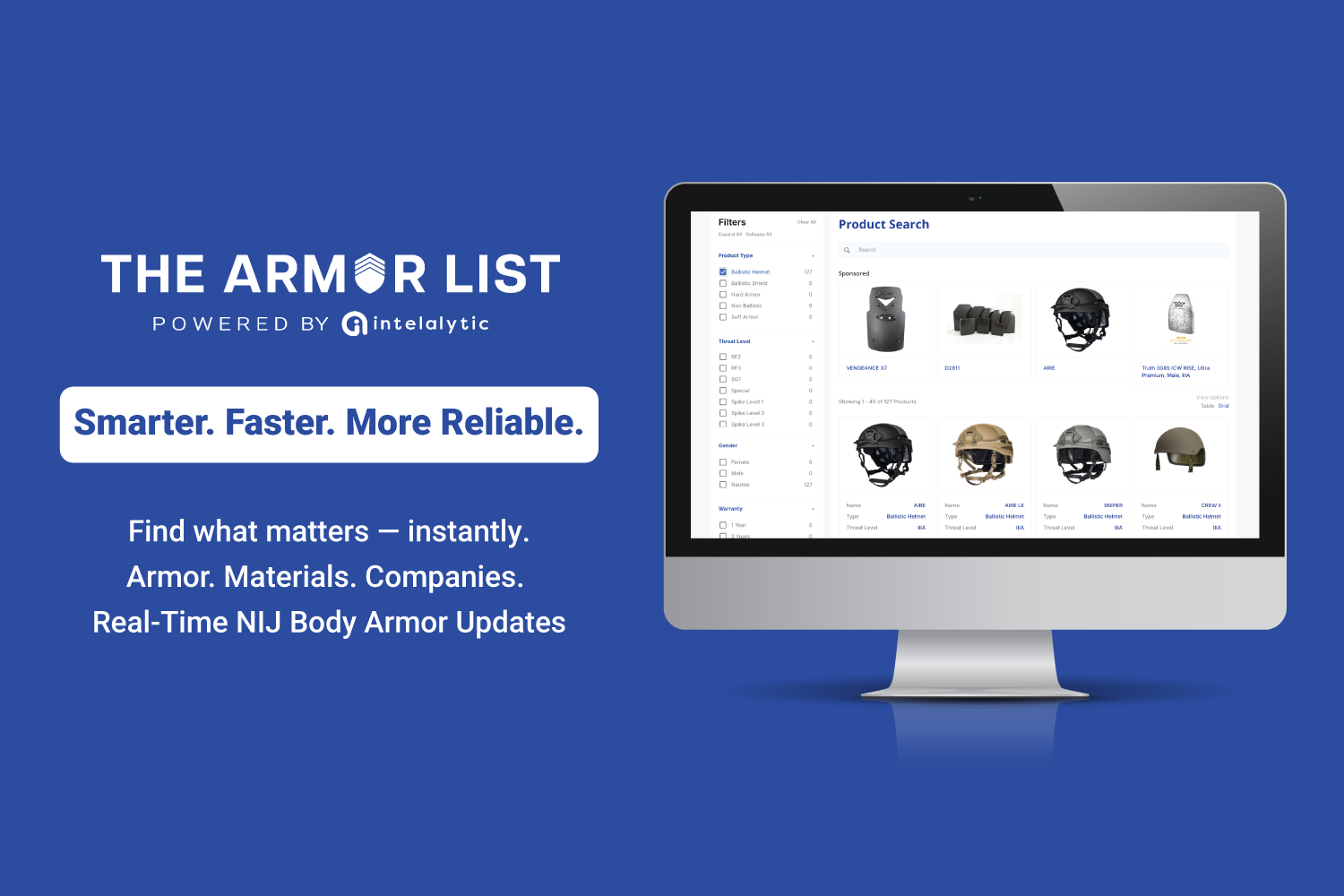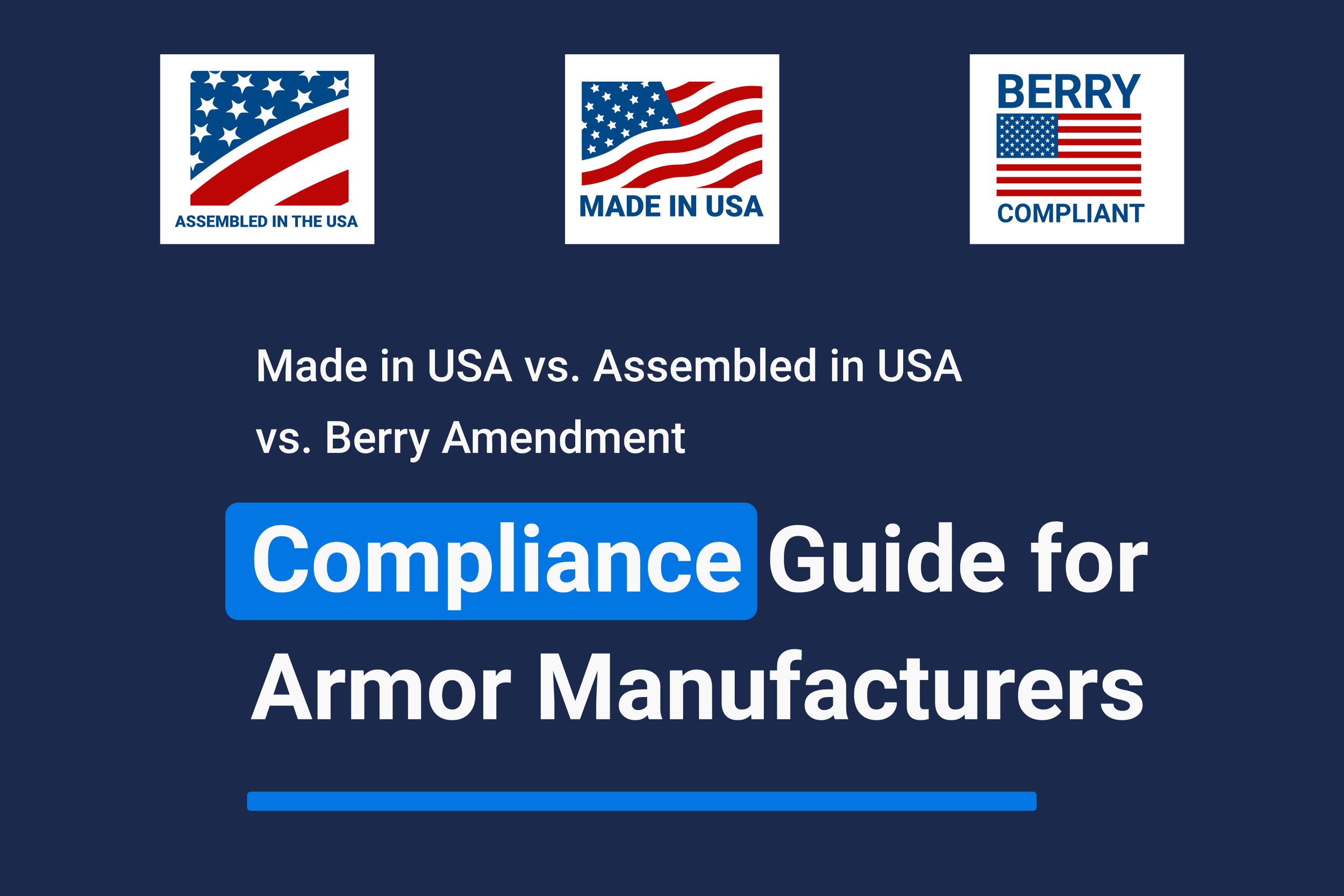Your Essential FAQ to Understanding Ballistic Resistance of Body Armor, NIJ Standard 0101.07
Following our publication last week, “Advancing Ballistic Resistance of Body Armor: A Comprehensive Guide to NIJ Standard 0101.07 and NIJ Standard 0123.00,” we present an essential FAQ.
This resource distills key aspects of these standards, offering crucial insights into the latest in ballistic-resistant body armor. It's crafted for a wide audience, from law enforcement and first responders to industry professionals. This FAQ addresses the transition from NIJ Standard 0101.06 to 0101.07, focusing on armor classification, testing requirements, and their impact on industry practices, providing clear, concise, and vital information for all stakeholders.
FAQ Worksheet for NIJ Standard 0101.07
Q. What is NIJ Standard 0101.07?
A. NIJ Standard 0101.07 sets detailed criteria for the performance and testing of body armor to protect U.S. law enforcement against specific ballistic threats, including handgun and rifle ammunition. It is a pivotal document for developing and accessing body armor, ensuring it meets rigorous safety standards.
Q. What Body Armor Types Does NIJ Standard 0101.07 Cover?
A. The standard categorizes three distinct types of body armor. These include soft armor, stand-alone hard armor, and in conjunction with (ICW) hard armor, (which works in tandem with soft armor to provide enhanced protection). Soft armor is designed to protect against handgun (HG) threats, and hard armor is designed to protect against rifle (RF) threats.
Q. Are There Specific Test Methods for Different Armor Designs?
A. NIJ Standard 0101.07 outlines unique test methods for various armor design types, ensuring each design type is evaluated under conditions that reflect its intended use. This includes additional testing for specialized armor designs to validate their performance under the standard’s criteria.
Q. What Other Standards are Incorporated in NIJ Standard 0101.07?
A. The standard is unique because it integrates methodologies and guidelines from multiple other standards organizations, including ANSI/SAAMI for ammunition specifications, ASTM International for material testing, and ISO/IEC for international standardization practices among others. For the first time, NIJ has also introduced NIJ Standard 0123.00 for ballistic threats and ammunition. These integrations ensure a comprehensive and globally recognized approach to body armor testing and performance evaluation.
Q: Does the standard specify units of measurement?
A: Yes, the NIJ Standard 0101.07 specifies a variety of units of measurement to cater to different aspects of body armor testing and specification. “Values stated in either the International System of Units (metric) or U.S. Customary Units (inch-pound) are to be regarded separately as standard,” as quoted by NIJ.
More specific units are referenced below:
Feet per second (ft/s) and Meters per second (m/s) for measuring the velocity of projectiles.
Millimeters (mm) and Inches (in) for dimensions and thickness measurements.
Grams per square meter (g/m^2) and Ounces per square yard (oz/yd^2) for the areal density of materials.
Degrees for angles in testing setups or temperature measurements.
Grams (g) and Pounds (lb) for weights and masses.
This diverse range of units ensures the standard's applicability and relevance in international and U.S. contexts, accommodating different measurement systems for global understanding and domestic manufacturing in body armor.
Q: What safety considerations are mentioned in the standard?
A: The standard emphasizes crucial safety considerations during testing, acknowledging inherent hazards. It mandates the establishment of strict safety protocols to protect testing personnel and maintain the integrity of the ballistic testing process. These protocols are vital for ensuring accurate and reliable results while safeguarding those involved in the testing procedures.
Q: How are test threats for body armor defined in the standard?
A: Test threats for body armor are comprehensively defined in NIJ Standard 0123.00. When used in conjunction with NIJ Standard 0101.07, this standard provides a complete framework for evaluating body armor. It specifies the types of ammunition and threat levels armor must protect against, ensuring a consistent and rigorous approach to testing body armor's ballistic resistance.
Q: What is the NIJ Standard 0123.00?
A: The NIJ Standard 0123.00, titled “Specification for NIJ Ballistic Protection Levels and Associated Test Threats,” specifies the ballistic protection levels and associated test threats identified by U.S. law enforcement. It defines five ballistic protection levels (two for handguns “HG” and three for rifles “RF”) and does not include performance requirements or test methods for ballistic-resistant equipment. Instead, it should be used with other standards, like NIJ Standard 0101.07, for testing and evaluating ballistic-resistant body armor and other equipment against these defined threats.
Q: Has the protection level nomenclature changed in this standard?
A: NIJ Standard 0101.07 has redefined its protection level nomenclature for greater clarity. NIJ Level II and IIIA, previously used for handgun protection in NIJ Standard 0101.06, are now NIJ HG1 and NIJ HG2, respectively. Similarly, NIJ Level III and IV have been updated for rifle threats to NIJ RF1, NIJ RF2, and NIJ RF3, reflecting a more granular protection classification against different rifle threats.
Q: Are there new test methods for armor designed for women in this standard?
A: The standard introduces innovative test methods and specific shot placement requirements for body armor tailored to women. These enhancements address female wearers' unique fit and protection needs, ensuring that the armor provides effective ballistic protection while considering comfort and mobility.
Q: What is the significance of the NIJ Standard 0101.07 for law enforcement agencies?
A: NIJ Standard 0101.07 is significant for law enforcement agencies as it sets the latest and most rigorous criteria for body armor performance. This ensures that the protective gear used by law enforcement officers meets the highest standards of safety and effectiveness against evolving ballistic threats.
Q: Is compliance with NIJ Standard 0101.07 mandatory for body armor manufacturers?
A: Compliance with NIJ Standard 0101.07 is not legally mandatory for body armor manufacturers, but it is highly recommended. Adherence to this standard is widely recognized as a benchmark for quality and effectiveness, and it plays a critical role in the credibility and market acceptance of body armor products.
Q: How does NIJ Standard 0101.07 differ from the previous standards?
A: NIJ Standard 0101.07 differs from previous standards by introducing more advanced testing methods, a revised nomenclature for protection levels, and specific considerations for body armor designed for women, reflecting the latest advancements in ballistic protection technology and research. One of the most starch contracts in this standard separates the ballistic protection levels and associated test threats now described in NIJ Standard 0123.00.
Q: Can NIJ Standard 0101.07 be used for certification testing, research, and development?
A: Yes, NIJ Standard 0101.07 is applicable for both certification testing and research and development purposes. It is a comprehensive guide for evaluating and improving body armor, facilitating innovation and advancements in ballistic protection technology.
Q: What is NIJ’s Compliance Testing Program’s role in this standard?
A: The NIJ's Compliance Testing Program is pivotal in enforcing NIJ Standard 0101.07. It evaluates and certifies body armor to meet the standard’s rigorous requirements, providing law enforcement agencies with reliable and safe ballistic protection options.
Q: What are the environmental conditions for armor testing in this standard?
A: NIJ Standard 0101.07 details comprehensive environmental conditions for testing body armor, including specified temperature ranges, humidity levels, and conditions for water immersion. These conditions simulate real-world scenarios, ensuring body armor maintains its ballistic resistance in various environmental conditions.
Q: Does NIJ Standard 0101.07 address female-specific body armor?
A: Yes, the standard includes tailored requirements and testing protocols for body armor designed specifically for female wearers. This acknowledges the need for body armor that fits the unique body shapes of women, ensuring effective protection and comfort.
Q: How does the standard ensure the longevity and durability of body armor?
A: The standard mandates comprehensive aging, wear, and maintenance testing protocols. These protocols assess the armor's ability to maintain its protective capabilities over time under various conditions of use and maintenance.
Q: Are there any guidelines for the care and maintenance of body armor in the standard?
A: While focusing primarily on performance testing, the standard underscores the importance of following the manufacturer's guidelines for care and maintenance. Proper care is crucial to preserve the armor's protective qualities and longevity.
Q: What ballistic resistance levels are defined in NIJ Standard 0101.07?
A: The standard specifies five levels of ballistic resistance: NIJ HG1 and HG2 for protection against handgun threats and NIJ RF1, RF2, and RF3 for rifle threats. Each level is designed to provide specific protection against a range of threats.
Q: How does NIJ Standard 0101.07 impact armor certification and labeling?
A: Body armor meeting the standard's requirements can be NIJ-certified. The standard also dictates that certified armor must bear labels clearly indicating its protection level and compliance status, ensuring transparency and reliability.
Q: What role does body armor flexibility play in NIJ Standard 0101.07?
A: Flexibility, especially in soft armor, is critical in NIJ Standard 0101.07. The standard sets criteria for flexibility to ensure comfort and wearability, which is particularly important in covert operations or prolonged wear situations.
Q: Are there any new materials or technologies acknowledged in this standard?
A: The standard recognizes and incorporates advancements in materials and manufacturing technologies. This approach allows for evaluating and integrating emerging innovations in body armor, ensuring the standard remains current with technological advancements.
Q: How does this standard address the different sizes and shapes of body armor?
A: NIJ Standard 0101.07 includes guidelines for testing body armor across a range of sizes and shapes. This ensures that the performance of the armor remains consistent, regardless of design variations, providing reliable protection for all wearers.
Q: Is there a focus on reducing backface signature (BFS) in the new standard?
A: NIJ Standard 0101.07 strongly emphasizes minimizing backface signature (BFS). Stringent requirements are set for BFS levels to reduce the risk of injury upon ballistic impact, ensuring that body armor stops bullets and minimally transfers impact force to the wearer. The Standard requires BFS not to exceed 44mm, the same as the previous NIJ Standard 0101.06.
Q: What Protection Does NIJ 0101.07 Offer Against Edged Weapons or Spikes?
A: NIJ Standard 0101.07 is primarily focused on ballistic threats. It doesn't directly address protection against edged weapons or spikes, as these are covered under separate standards. This distinction ensures specialized and effective protection for different threat types.
Q: How Does NIJ 0101.07 Affect Body Armor Procurement for Law Enforcement?
A: NIJ Standard 0101.07 is a critical guideline for law enforcement agencies in procuring body armor. It ensures that the armor purchased meets contemporary ballistic resistance and safety standards, thus providing officers with the most effective and up-to-date protective gear.
Q: Why is Shot Placement Important in NIJ 0101.07 Testing?
A: To realistically assess the armor's protective capabilities, accurate shot placement in testing is essential in NIJ Standard 0101.07. It ensures that armor is evaluated under conditions that mimic real-world threats, accurately measuring its effectiveness.
Q: Are Body Armor Accessories Tested Under NIJ 0101.07?
A: Yes, NIJ Standard 0101.07 includes testing protocols for body armor accessories, such as trauma plates. These accessories are rigorously tested to ensure they contribute effectively to the overall ballistic protection of the armor system.
Q: Does NIJ 0101.07 Accommodate Various Body Types and Sizes?
A: The standard recognizes the need for body armor to fit and protect various body types and sizes effectively. It includes provisions to ensure that armor designs accommodate diverse wearers while maintaining protective integrity.
Q: What are the Re-certification Requirements for Body Armor?
A: Under NIJ Standard 0101.07, body armor must undergo periodic re-testing to maintain its NIJ certification status. This continuous evaluation ensures that the armor complies with evolving standards and protects against current threats.
Q: What Differentiates the Protection Levels in NIJ 0101.07?
A: NIJ Standard 0101.07 defines distinct protection levels (HG1, HG2, RF1, RF2, RF3) to address specific threat types. Each level is designed to offer protection against certain calibers and types of ammunition, reflecting the varied nature of ballistic threats.
Q: How Does NIJ 0101.07 Influence Body Armor Design and Innovation?
A: NIJ Standard 0101.07 significantly influences body armor design and innovation by setting advanced performance criteria. These criteria drive manufacturers to develop armor that is more effective against emerging ballistic threats and more comfortable and adaptable for wearers—the standard acts as a catalyst for technological advancements in materials and design methodologies.
Q: How Should Outdated or Damaged Body Armor be Disposed of?
A: Proper disposal or recycling of outdated or damaged body armor is crucial. NIJ Standard 0101.07 emphasizes the importance of following specific guidelines, often provided by manufacturers or regulatory bodies, to ensure that such armor is disposed of in a way that prevents misuse and considers environmental concerns.
Q: What are the Labeling Requirements for Certified Body Armor?
A: Certified body armor under NIJ Standard 0101.07 must have clear and visible labels indicating compliance with the standard, including its designated protection level. These labels are vital for transparency, enabling users to identify the armor's capabilities quickly and ensuring accountability in the armor's performance standards.
Stay connected with the IntelAlytic Team
For the latest updates and educational content on body armor and related public safety and defense industry topics, connect with IntelAlytic. Stay informed and ahead in your field by accessing our resources and expertise. Join our community for ongoing insights and discussions.
Join us on LinkedIn for Daily tips and resources.

















